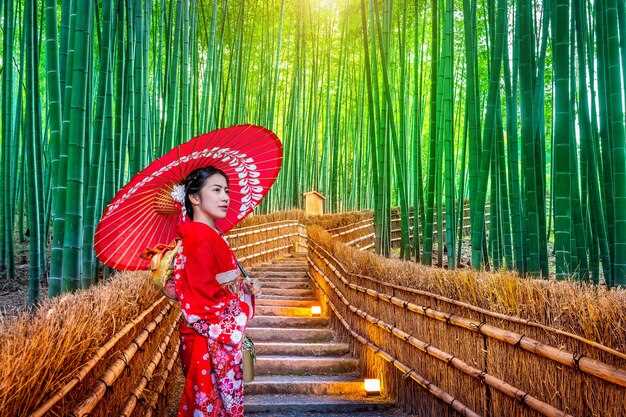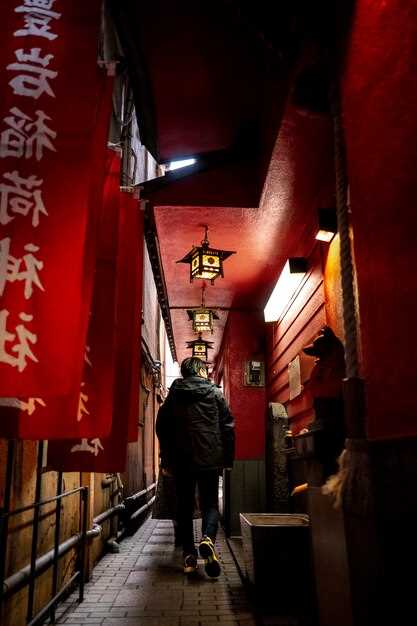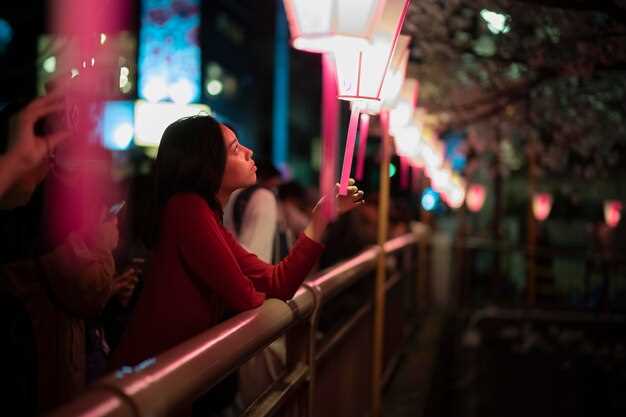
Take this recommendation: book a guided Kyoto Gion night walk with Geisha Insights to ensure a memorable evening. The route starts near shijo-dori and threads through illuminated lanes of Gion, where lanterns glow and wooden facades whisper history. Your guide, tatsumi, will sizeup the crowd, tailor the pace, and share practical notes that bring geisha culture to life. The walk takes about two and a half hours and includes several stops to observe etiquette and the quiet rhythm of the neighborhood after dark.
Along the way you see temples and a shrine standing in tranquil precincts; the illuminated facades and narrow lanes create a mood for careful observation. You’ll hear anecdotes about etiquette and daily rhythms, and you’ll notice small details, like guests bowing and maiko stepping softly along the thresholds.
Practical tips: wear comfortable shoes and maintain a cautious pace; be mindful of scooters that move through narrow lanes. Your guide will size up the group and adjust tempo, ensuring you don’t miss photo opportunities at several lantern-lit corners. If you want to finish with a light dinner, plan to exit toward shijo or along Pontocho, where options stay open a bit after dusk.
For travelers abroad, this night walk provides practical context for respectful behavior and authentic memories. If you want to extend your night, you can linger near the river after the last glow fades and return to the hotel for a relaxed morning. The insights from tatsumi will stay with you in the morning and beyond, making the night feel illuminated and tranquil.
Kyoto Gion Night Tour: Practical Guide and Geisha Insights Recap
Wear comfortable shoes and arrive early; whether you want a concise stroll or a deeper, geisha-focused briefing, book a licensed guide who specializes in Kyoto Gion to maximize insights.
Begin near the Shirakawa river and follow the lit alleys along Hanamikoji Street; you’ll pass traditional teahouses, wooden lattices, and stairs that require careful footing, including a hidden courtyard, so walk slowly and carefully.
The Geisha insights recap includes memoirs about training, discipline, and the daily rhythm of time in Gion; meeting women who perform with poise is fascinating and leaves a positive impression, and you’ll hear how they highly value listening, timing, and sensing the room, and how they like to tailor conversations to the moment.
Visiting etiquette matters: greet politely, avoid loud voices, and stay with the group; ask permission before photos, and refrain from touching objects; the guide will show respectful lines of conduct so you travel cautiously and smoothly.
After the tour, consider a quick stop for a favorite drink along the streets, or browse small outlets for souvenirs; if you’re living in Kyoto for a week, pairing this night with a daytime temple visit expands the positive experience, and you’ll retain vivid memories of geisha stories and the hidden, intimate corners of Gion.
Optimal Timing: When to Start to Maximize Geisha Sightings
Begin at 5:30 PM to maximize geisha sightings along Gion’s lantern-lit lanes, where the first energetic flush of evening life converges with scheduled appearances between teahouses and engagements.
In spring and autumn, that early dusk window extends visibility, while winter shifts activity earlier and crowds thin, creating peaceful pockets for attentive observation. Availability varies by night, so check the tour desk for the latest notices and the policy on photography. The English-guided stroll highlights context, and storytelling flows from memoirs and craftsmanship to help you appreciate the tradition without distraction.
To optimize your chances, aim for two practical windows: the primary start at 5:30 PM for central Gion, and a secondary blur between 6:45 PM and 7:30 PM on busy evenings when routes between districts tighten the pace. The experience includes curated moments, light appetizers, and respectful opportunities to observe, with attention to requests from hosts and guests.
For a complementary contrast, consider morning time near ginkakuji as a peaceful prelude to the night walk. That quiet allows you to appreciate Kyoto’s rhythm and memoir-worthy scenery before the city softly shifts toward evening energy, enriching the overall understanding of geisha culture in luxury settings.
| Season | Best Start Window | Geisha Activity Note | Practical Tip |
|---|---|---|---|
| Spring (Mar–May) | 5:25 PM – 6:40 PM | Highest visibility along central lanes; busy but controllable crowds. | Arrive 10 minutes early; carry a calm camera approach to respect requests. |
| Summer (Jun–Aug) | 6:10 PM – 7:30 PM | Longer evenings; humidity lowers sighting pace but increases availability after work. | Hydrate, choose shaded walk segments, and prioritize wider streets for smoother viewing. |
| Autumn (Sep–Nov) | 5:40 PM – 6:50 PM | Best balance of light and movement; lanterns add atmosphere. | Plan a brief pause at a viewpoint to reflect and capture a moment of storytelling. |
| Winter (Dec–Feb) | 5:00 PM – 6:15 PM | Quieter routes; earlier collapse of activity but clear chances before dusk. | Dress warmly; shorter distances, with windows that allow intimate observations. |
Ethics and Etiquette: How to Observe Geisha Respectfully
Keep voices down and mind the space; observing with a calm mind makes the experience rich and respectful.
In gions, etiquette is passed along through hosts and the rhythms of daily life; for those visiting, these guidelines help align with tradition across the days you are visiting.
- Stand back from the front of performances and ceremonies; stay on designated sidewalks or paths and let those working in the ground have priority.
- Limit photography and filming: respect restrictions posted by venues or hosts; if you are allowed, keep the camera low and aim for composition rather than faces; avoid flash and loud chatter during moments of brewing or performance.
- Use approved tickets and experiences: book through official channels; those experiences come with guidelines and conduct expectations; cash handling should go through the venue as an offering to support the evening, not as direct tips to individuals.
- Respect shrines and gardens along the route: pause briefly, bow, and move on quietly; avoid stepping into restricted areas or touching plants.
- Engage mindfully with the guide: ask thoughtful questions about history, training, and the arts, not personal life; those questions should be asked during appropriate breaks and not during performances; spontaneous inquiries are welcome when the host invites conversation.
- Be considerate of those hosting and performing: keep conversations soft and minimal; do not interrupt or crowd those in front of the group; respect the schedule and the recommended pace for the hike through narrow streets.
- Prepare your interests in advance: share your interests in history, gardens, tea brewing, or artisan crafts with your guide; they tailor the experiences to fit the medium and your curiosities.
- Respect the environment: avoid litter; carry bags for your trash; do not touch artifacts in gardens or shrine precincts; stay on marked ground to protect centuries-old grounds.
- Do keep voices low and walk quietly behind the group during performances.
- Don’t address geisha directly during a performance; wait for a cue from the host or guide.
- Do follow all restrictions posted by venues, tours, and hosts; this includes photography rules and seating arrangements.
- Don’t pressure for personal contact or autographs; exchange respect and gratitude through the experience and official channels.
- Do tip or offer gratitude through the venue if advised; use the correct envelope or medium as directed by the host.
- Don’t photograph in restricted moments or during sacred rites at shrines.
- Do arrive on time for the scheduled days and adhere to the itinerary as planned by the gions tour operator.
These practices help preserve the dignity of geisha art, honor host houses, and deepen your understanding of Kyoto’s history and night-time experiences.
Gear and Attire: What to Wear and What to Bring for Comfort

Wear sturdy walking shoes and a breathable base layer; Gion’s lanes demand comfortable soles for hours of walks and reflect decades of guide experience. You’ll notice changes when the air cools, and flexible layering keeps you comfortable. If you’re interested in deeper context, your guide can share concise anecdotes during the route.
Layer with a light, water-resistant jacket or cardigan, plus a compact umbrella for sudden showers. Also, a small scarf adds warmth on breezes along lantern-lit alleys, and quick changes keep you comfortable as you move between venues and izakaya stops. Consistently dressing in adaptable layers helps you stay fresh through the entire walk.
Pack a compact daypack with essentials: water or a beverage, a photo-friendly device, a power bank for late hours, sunscreen for daytime segments, and a light snack. You can join conversations with hosts and geisha experts, soaking up gems of insight gained through years of expertise you’ll remember long after the night ends.
In summer, favor moisture-wicking fabrics and breathable cotton; in autumn and winter, add a warm layer or shawl. For days starting with brunch and ending with a long night of walks, arrange layers that flex as times change. This setup remains practical for quick adjustments and keeps your pace steady.
Carry a discreet, compact bag; it stays comfortable under the wrist and fits luxury settings. The tour’s services often include guidance on camera etiquette and photo moments; also, if rain is forecast, check availability for rain gear with your hotel or guide, so you’re covered without slowing you down.
If you include a daytime arashiyama stroll, keep footwear and layers consistent for comfort across terrains. Young travelers, indulging in late-night strolls, discover how a steady rhythm helps you capture more photo moments and enjoy the evening without fatigue.
Route Highlights: Key Stops and What to Expect at Each Night Sojourn

Book a small-group tour with flexible timing to take in every moment, gaining direct insights from local guides guiding you through Japan’s storied quarters.
- Gion Hanamikoji Street at dusk: Historic wooden machiya line the lane as lanterns glow softly. You’ll get a glimpse into the choreography behind geisha appearances, with a clear history narrative from your guide. The setting invites close, front-row observations in a comfortable, intimate atmosphere; wear comfortable shoes and expect a few short stair climbs between facades. Tickets typically include access to key vantage points and a brief peek into teahouse life, with optional drinks at nearby establishments.
- Pontocho Alley and the Kamogawa riverside: A narrow, candlelit corridor runs beside the river, offering a natural backdrop for night photography and quiet conversations. Guides explain how this quarter evolved from market streets to a luxury dining and performance hub, providing context on etiquette and artistry. This stop is ideal for small-group interaction, whether you focus on architecture or human stories; enjoy a curated drink at a boutique bar as you soak in the atmosphere.
- Shirakawa River banks and Maruyama Park edge: Lantern-lit riverside paths introduce a peaceful island of calm amid the bustle. The history of the district unfolds through façades, gates, and lanterns, with your guide sharing anecdotes about historic performances and everyday life. The natural breeze and soft lighting set a reflective mood; comfortable footwear helps on uneven stone surfaces, and you’ll have chances to pause for photos or a quick overview of cultural milestones.
- Back streets near Yasaka Shrine and youth-led arts spaces: Narrow lanes reveal intimate spaces where women storytellers and performers keep long-standing traditions alive. You’ll hear concise histories and context about seasonal festivals, with the guide providing a front-of-house perspective on how performances transition from stage to street in the evening. This stop emphasizes accessible storytelling and compact, quiet corners perfect for a relaxed pace in a small-group setting.
- Final stop: boutique tea or sake lounge: End the night in a refined space offering curated drinks and light bites, reinforcing a sense of luxury without overwhelming crowds. The guide recaps the night’s highlights, linking each stop to broader history and contemporary practice, and you’ll receive optional recommendations for future evening experiences. Whether you prefer a traditional tasting or a modern pour, this closing setting adapts to your preferences with flexible seating and a comfortable atmosphere; keep your ticket handy for any follow-up extensions.
Morning extensions offer a quiet riverfront stroll or shrine visit to deepen the experience, reinforcing the community of guides and guests who value authentic, well-paced storytelling. This route prioritizes certain moments where you can take your time, wear comfortable footwear, and enjoy the blend of historic memory and modern craft that defines Kyoto’s Gion by night.
Photography Guidelines: Capturing Moments Without Disrupting the Experience
Ask for consent before photographing anyone, especially geisha or staff; a brief nod and a friendly greeting earns permission and sets the tone for the night. If someone declines, respect their choice and move on.
Respect the customs of Kyoto’s Gion district by keeping a comfortable distance, stand back during performances, and avoid blocking narrow alleys or doors. Use a soft voice and minimal gestures to blend into the scene; this approach keeps the focus on moments rather than the camera and is overwhelmingly appreciated by locals and visitors alike.
Technical approach: switch to a silent or electronic shutter after-dark, and avoid flash unless explicitly allowed. A fast lens (f/2.8 or wider) helps you grab moments without drawing attention, while an ISO range of 800–3200 and a shutter speed of 1/60–1/125s preserves motion without blur. Shoot in RAW and plan a light post-processing workflow to preserve skin tones and fabric textures; include a prime option (35–50mm) for intimate portraits and a longer lens for street scenes from a distance.
Composition and timing: observe the choreography of the night through the route–gestures, glances, and the way a sleeve catches light. Anticipate moments while hopping between spots, including street corners, tea houses, and quiet courtyards; varieties of light create a richer narrative. If you need to capture a crowd, focus on smaller, meaningful exchanges rather than wide crowds, and be ready to adjust on the fly through changing light.
Interactions and etiquette: friendly, respectful behavior during breaks helps you anticipate moments without interrupting the show. Also, when photographing children, obtain consent from guardians and keep a respectful distance. Coordinate with pickup times and the guide to avoid clogging narrow streets, and avoid rushing guests during transitions.
Accessibility and sharing: the tour includes vegetarian options and accommodating staff; plan with the guide for visiting venues to document a broad arc of scenes which include different spaces. This global mindset includes respecting local customs, avoiding blocking view lines, and staying mindful of times when the street is busiest; visiting at different hours, including morning, can reveal new textures and stories.
Post-production and captions: for public sharing, keep captions honest and non-intrusive; credit contributors when appropriate and respect privacy by blurring or omitting identifiable faces if needed. This approach ensures the moments you capture reflect the adventure rather than sensationalize it, and aligns with the respectful tone of after-dark experiences.
